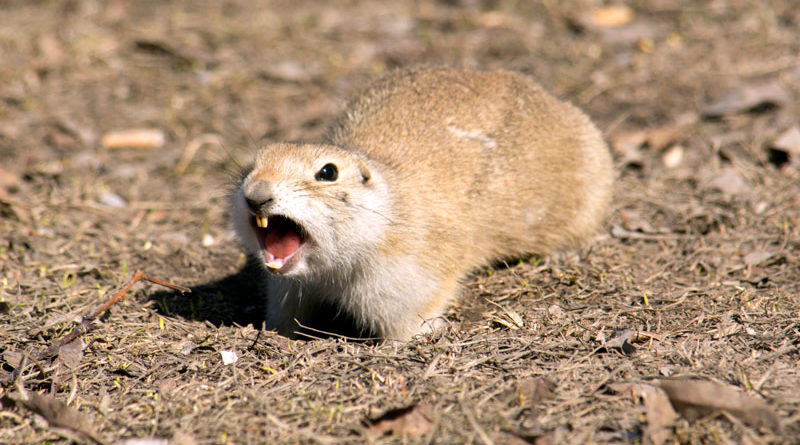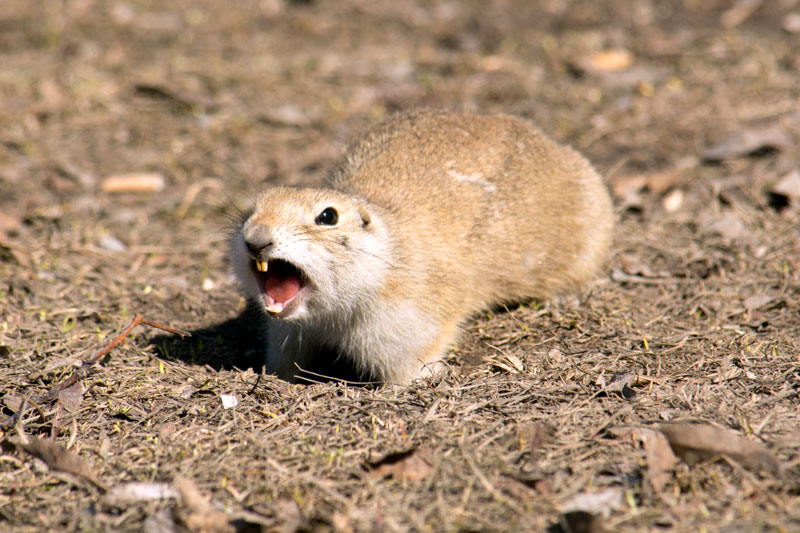Strychnine for gopher control to be phased out
By Sean Feagan, Local Journalism Initiative Reporter


Strychnine, a neurotoxic alkaloid, is used as a poison to control populations of Richardson’s ground squirrel, a small mammal species (known colloquially as “gophers”) that damages crops and causes ground disturbance via burrowing.
The compound, produced by Maxim Chemical International Ltd., is provided as a two per cent liquid compound that is added to a food bait, usually grains such as oats. The poisoned bait is introduced into gopher colonies via burrow entrances in the spring when food sources are scarce, typically resulting in the mass demise of the occupant gophers.
On March 4, the Pest Management Regulatory Agency (PMRA), a division of Health Canada, announced its decision to cancel the registration of strychnine for Richardson’s ground squirrel control after completing a re-evaluation of the product, as prescribed by the federal Pest Control Products Act.
As a result, strychnine for gopher control will be phased out over three years. Sales to retailers (limited to municipalities, including Wheatland County) will end one year from the announcement; sales by retailers to producers will end by March 2022; and the possession and use of the product will be prohibited by March 2023.
During a consultation period regarding the compound’s re-evaluation, held from June to September 2018, Wheatland County Agricultural Service Board chairman Jason Wilson sent a letter to PMRA, requesting that strychnine’s registration be maintained for agricultural pest control.
While PMRA said its decision to de-register the product was made in response to concerns that strychnine’s effects on non-target animals, including species at risk, the move could prove detrimental to wildlife, said Wilson in a recent telephone interview.
“They are not going to achieve their targeting of limiting other animal deaths by deregistering it,” said Wilson. “That was the main push behind it – to take it away from wildlife like hawks and coyotes.”
But as strychnine is more effective than competing control products, incidental poisoning of wildlife may become more likely as producers are forced to turn to alternates, such as Rozol, an anticoagulant rodenticide, said Wilson.
“Rozol might harm the other animals more because it affects the gophers slower, whereas with strychnine, you’re going to have gophers dead in 10 minutes,” he said. “With Rozol, you might have sick gophers around for two days, and that’s when the hawks and coyotes will probably end up getting them.”
Producers should be aggressive in attempting to control rodent populations while strychnine remains available, because leaving them unchecked is bad for business and community relationships, said Wilson.
“As a landowner, if I’m not taking care of my pests, they can migrate to other properties – that’s when it becomes a larger issue,” he said. “When that negligence is crossing the fence and starts creating loss for another producer who has done his or her due diligence to stop the problem, that’s when we have to be a little smarter and work together.”
Losing strychnine will be an unfortunate development for producers, said Russ Muenchrath, manager of agricultural services with Wheatland County.
“You need a whole bunch of management tools, but it’s an important one for farmers to be able to use and it’s going to be gone,” he said. “With any pest, it’s about managing it the best you can.”
One of the best preventative approaches to gopher management is effective pasture management, which aims to ensure rangelands are not overgrazed so they do not become attractive to gophers to colonize, he said.
“(Ground squirrels) don’t like tall grass,” said Muenchrath. “They like short grass so they can see predators coming.”
But other options remain on the table, including other control agents and shooting, said Muenchrath.
Landowners could also construct an artificial nesting platform for raptors on their property, which the county can assist with, he added.
“They could come to us as a start to help with (building a nesting platform), he said. “There is a publication by Alberta Agriculture that talks about how to design and put up a platform, and distances from each platform, because nesting pairs (of hawks) are territorial.”
